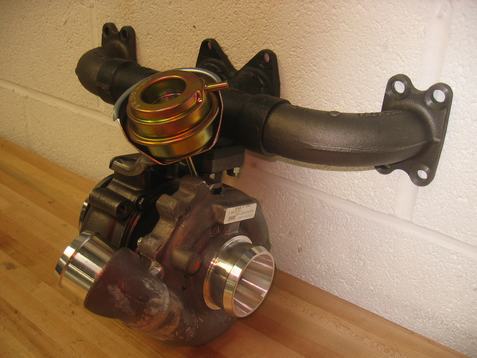TURBO DIESELS WITH MECHANICALLY CONTROLLED FUEL INJECTION PUMP
Until the early 1990's, nearly all small turbo diesel engines had a mechanically operated diesel injection pump with fuel delivery directly controlled by a mechanical throttle linkage. So that by and large the more the driver opened the throttle, the more fuel was injected into the engine.
Apart from a cold start arrangement and a fuel enrichment compensator mounted on the pump, no other sensors had an influence on fuel delivery, although some models did introduce other controls before going fully electronic.
The pump fuelling on most vehicles can be adjusted with the pump on the engine by turning the main fuel screw after removing the seal. There are other adjustment screws, but generally do not attempt to adjust these unless you are having a pump overhaul, in which case the pump will be removed from the engine. Other pumps will have the main fuelling adjustment screw under a cover at the rear of the pump or under a plug on the side of the pump. If this is the case, fuel will be drained out of the pump when the plug is removed. You will then need a small mirror and a light to identify the position of the internal adjustment screw. With the car in gear, roll the car forward until the screw comes into view inside the pump. Generally turning the screw clockwise just a few degrees gives an increase in fuel delivery. An exhaust smoke test should be carried out after these adjustments if there is any doubt that the vehicle would not pass the MOT test. When increasing the fuelling in this way the increase will be from tickover right upto maximum r.p.m. This is not exactly what is required for optimum fuel economy, or smoke emission. So unless the volumetric efficiency has been improved by other modifications, such as an improved induction system, uprated turbo, increased boost or larger intercooler, it will often only be necessary to adjust the compensator. (On some engines the compensator cannot be easily reset without some modification).
The compensator is a device mounted on the pump which increases the fuelling in response to turbo boost pressure. Most mechanically operated pumps on turbo diesel engines are fitted with one. Boost is fed from the pressure side of the turbocharger or manifolding via a small bore pipe to a chamber above a rubber diaphragm. Below the diaphragm is a rod and linkage to the internals of the pump. Boost moves the diaphragm and rod linkage which moves the fuelling rack to increase fuelling. More boost moves the linkage further for increased fuel delivery, until it reaches a stop.
Fuelling adjustments are best carried out by adjusting the compensator, as this will be the most fuel efficient way because extra fuel is injected primarily only with increasing boost, when the extra fuel is most needed. Too much fuel at the bottom end before sufficient boost is available will produce excessive black smoke.
It is not usually necessary to remove the pump from the engine to obtain the correct curve. Although if the pump needs a rebuild or you are willing to spend an extra �300-�400, you can have the pump rebuilt to give an uprated fuel delivery where it is most needed in the r.p.m. range to suit your particular requirements.
Diagram showing typical turbo diesel system latout with mechanical pump
 |
Previous page: MAXIMUM PERFORMANCE WITH OPTIMUM ECONOMY
Next page: Land Rover



